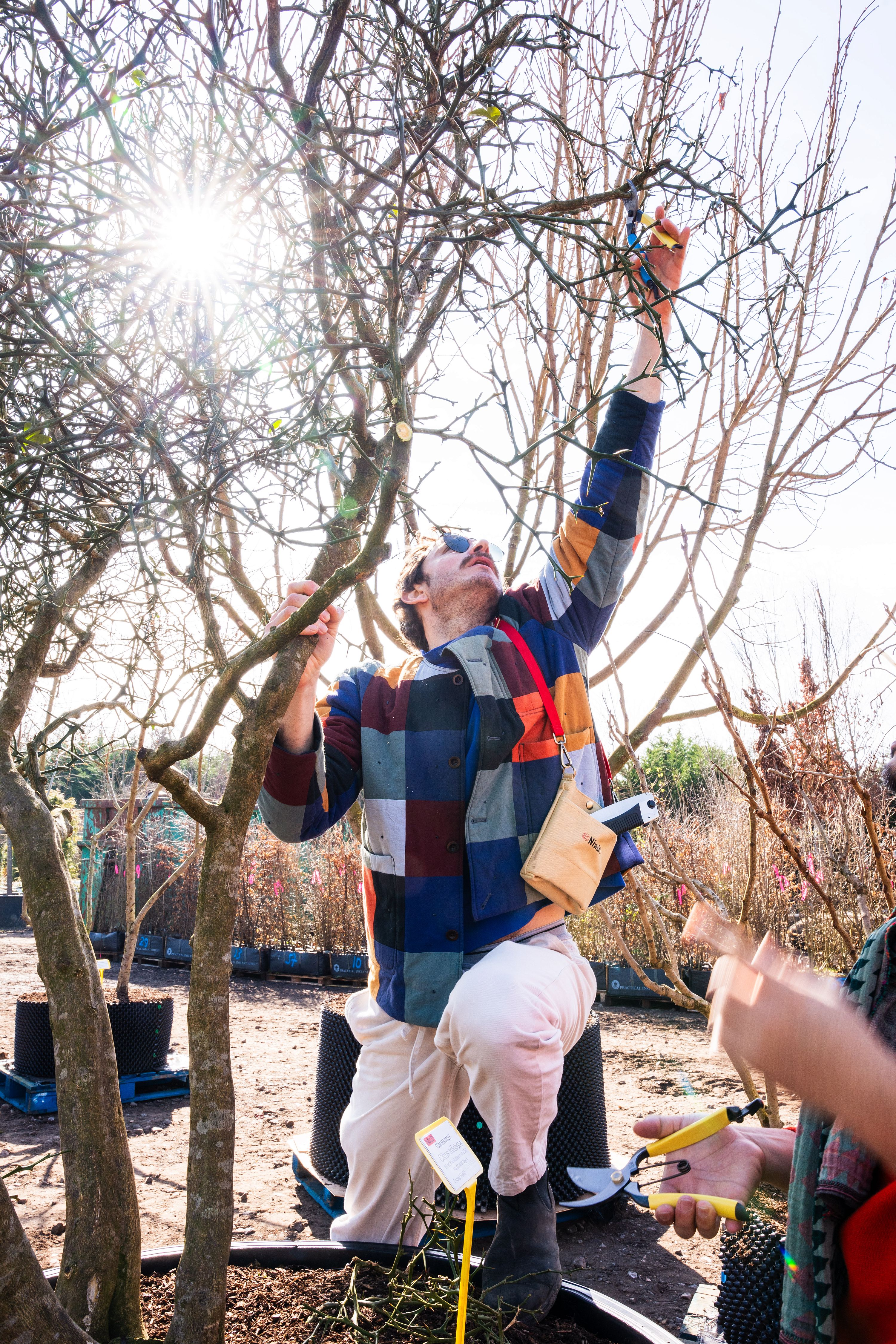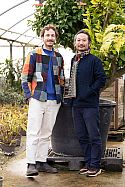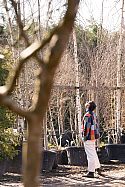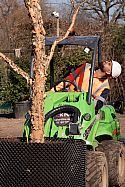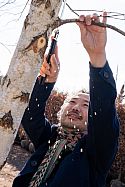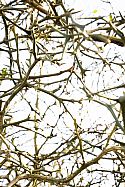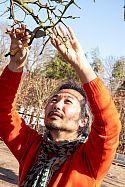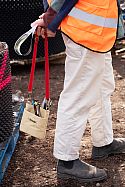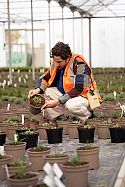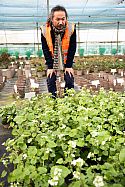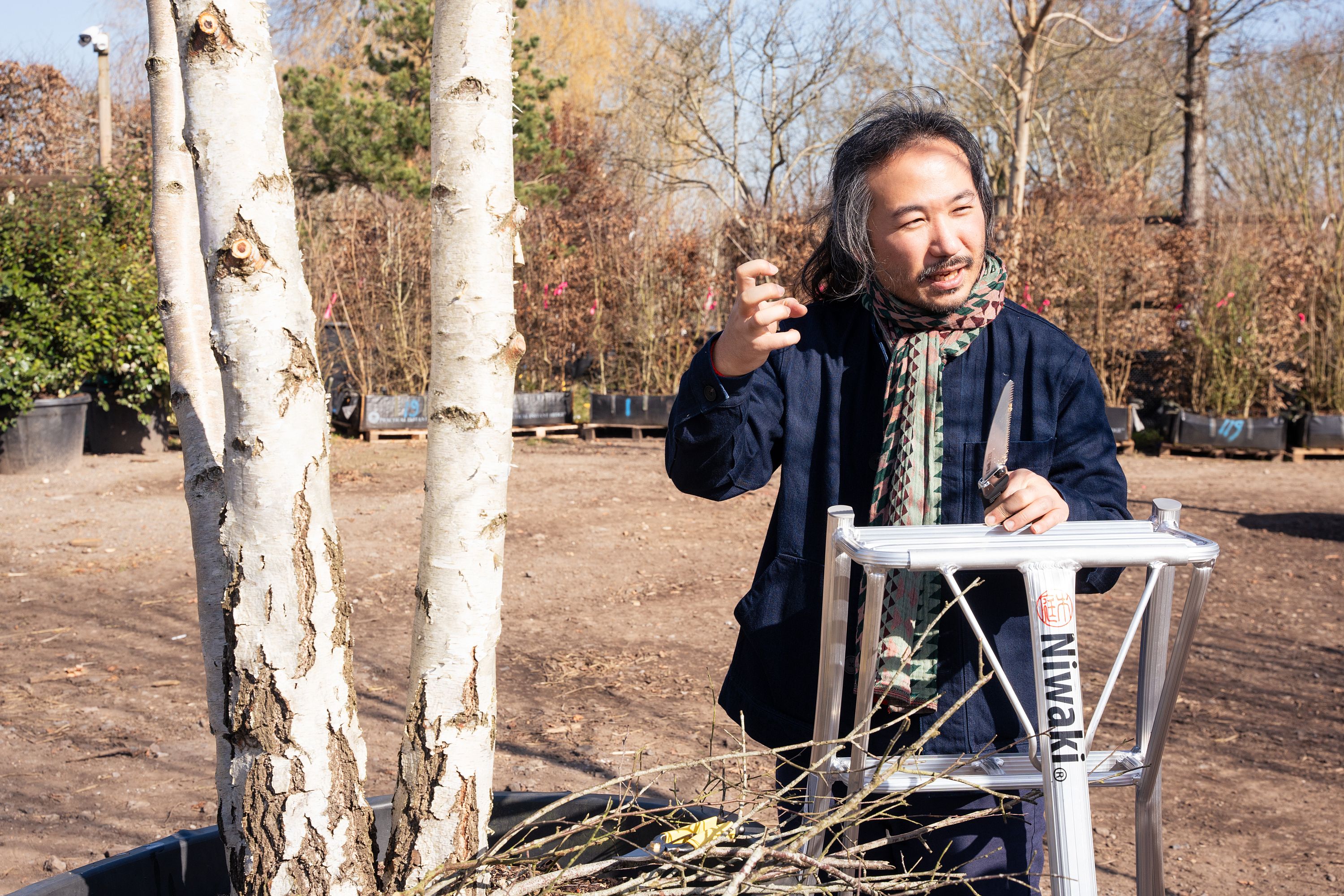Road to Chelsea 2025: dispatch 1 with Tom Massey & Je Ahn
In early March we spent a day at Hortus Loci, a specialist nursery in Hampshire that grows for a wide range of high profile gardeners (and is also open to the public) to find out more about the Avanade Intelligent Garden; one of several gardens to watch out for at RHS Chelsea Flower Show this year.
The garden has been conceived and designed by Tom Massey and Je Ahn – the award-winning team behind several other memorable spaces in recent years, including the 2024 RHS Chelsea Flower Show gold medal winning WaterAid Garden.
Niwaki is very happy to be sponsoring Tom, Je and their team, so of course we jumped at the opportunity to find out how the tools we’ve supplied are being put to use.
It was very much a working day for Tom and Je, who were keen to inspect the trees and plants they have selected, check up on the progress of the developing plants housed in Hortus Loci’s warren of polytunnles and, most excitingly from our point of view, prune any dead or damaged limbs and rubbing branches and give the trees a bit of general tidy-up.
The staff at Hortus Loci have set aside an area of the nursery that is the same size as the plot that Tom and Je will be working within in May (the largest plot in the show, and South facing). Wandering through this area, you wouldn’t know you were walking in the prototype of a Chelsea Flower Show garden, but as Tom and Je share their plans and explain their concept it begins to take shape in my mind.
It helps that the trees have already been moved roughly into position so, even in this otherwise bare space, one can picture the general shape of the design. Tom and Je spend a not unreasonably long time walking to and fro through the site, imagining paths and planting amongst the trees while considering things like shade, clearance and other mysterious top-garden designer factors. There’s a skid-steer loader on hand to move a few of the trees and get the layout just right. In early March the trees remain bare, so a healthy imagination combined with good familiarity of the various species is required to “see” the way it will look towards the end of May. “Weird Tetris” is how Je describes the process.
Of course, bare branches make it’s easier to see the structure of the trees, which in turn informs what and how to prune. Transportation and winter weather have both taken their toll on a few of these specimens, so broken branches need to be removed, as do any branches that confuse the ideal shape of the tree. In some cases, a little delicate crown-lifting is required and Tom and Je both take it in turns to shape and trim. Pruning now gives the trees plenty of time to seal and heal before the big days in May, but inevitably there will be some last minute pruning on site to make sure every last detail is just right.
Je is an architect by day, and although his work often intersects with horticultural projects and his instincts seem to be right every time, he defers to Tom on any big pruning decisions. As he works, I ask about the architectural features and am excited to learn they are being grown from mycelium (the thick matting of ‘roots’ that anchors fungus into place, infiltrates the soil all around us and, it has recently been discovered, connects trees with one another in surprising ways). Discarded PPE and plastic screens from the dark days of Covid have been melted to form moulds to house ash shavings in which mycelium panels of various sizes are grown by pavilion fabricator Sebastian Cox. Once fully bound by mycelium the panels are dried and then used to clad a frame made from timber removed in the war on Hymenoscyphus fraxineus aka the dreaded ash dieback.
An unexpected advantage of seeing the trees at this time of year is the opportunity to admire the variety of textures and growth patterns on display. A sizeable Citrus trifoliata (syn. Poncirus trifoliata or hardy bitter orange) assaults me with its spiny, waxy stipules as I back up to take a photo, prompting Je to recall being frequently spiked as a child in his native South Korea, where the tree also originates. He explains how it is used for hedging in Korea, and is very often alive with sparrows.
I’m drawn to the shaggy, peeling bark of Betula nigra (black birch) and notice it has a strange, high-tech black plastic protrusion: a tree sensor. This is where the “intelligent” bit of the Avanade Intelligent Garden comes in. The sensor is constantly monitoring growth, temperature, humidity, lean angle and light levels of the tree and relaying the data to an artificial intelligence (AI) powered application, trained on species-specific data to predict what the tree will need and prompt the gardeners to intervene only when needed. It’s clever stuff, especially when applied to larger urban planting schemes where up to 50% of newly planted trees don’t survive longer than a decade, suffering from neglect and drought, with a shockingly wasteful 30% succumbing in their first year. Trees have rightly been promoted as a major tool against climate change-induced overheating in cities, so this sort of carelessness needs addressing urgently.
As an idealised urban forest garden, the urbanites who might live and relax in the space have also been considered. Almost every tree or plant is edible or productive in some way, from the fruits of the gnarled medlar to the edible and unusual herbs in the underplanting. An informal tasting session takes place as we tour the warren of polytunnels behind the staging plot where Hortus Loci are bringing on row upon rows of 1 litre pots, each bearing unpromisingly splodges of green. Of course, Tom and the Hortus Loci team know what they’re doing and the delicate balancing act of ensuring everything is ready for Chelsea is in full swing, with back-up plants (and even trees) waiting in the wings at different stages of development.
Trees trimmed and plants inspected (and tasted), I leave Tom and Je to try and fit a Niwaki 4ft ladder in Tom’s quite sporty car (it doesn’t fit) and discuss their impressions of the day, with 29th April – the first day they can access the show ground in Chelsea – clearly in their sights.
Next week, we’ll be joining two more RHS Chelsea Flower Show garden designers and friends of Niwaki to follow their progress in the run up to the show: Dr Catherine MacDonald, designer of the Boodles Raindance Garden, and Baz Grainger, designer of the Killik & Co Futureproof Garden. In fact, we’ll be offering regular updates from Tom & Je, Catherine and Baz from now until showtime. Whether you’re planning to visit the show or not, we hope you will enjoy our behind the scenes coverage to reveal how these fantastic spaces come into being.
